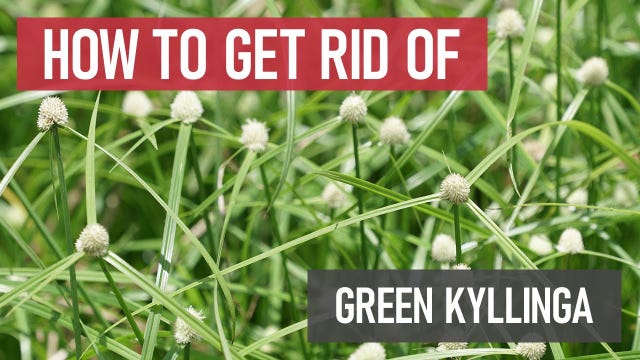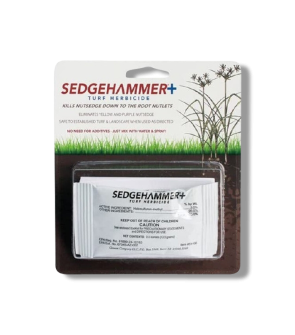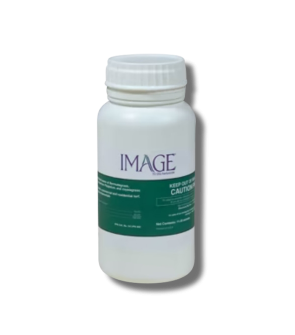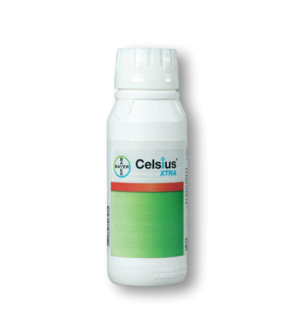Gain access to personalized product screening, the best pricing, rewards, and more!
Most Effective Products
Green Kyllinga Control: How To Get Rid of Green Kyllinga
This page is a general DIY guide for controlling green kyllinga. Using the products and methods suggested, you get control of green kyllinga. Follow this DIY article and use the recommended products, and we guarantee 100% control of green kyllinga.
Green kyllinga is a weed from the sedge family that has become a rising problem in the southeastern United States. Believed to be native to Asia, It was first discovered in the country about 50 years ago.
In the last 10 to 15 years, kyllinga has become a major problem for turfgrass and landscape managers. The main issue with green kyllinga is that it grows in dense mats that can quickly take over a garden or lawn and be an eyesore.
Kyllinga produces little nutsedge seed heads that can produce 5,000 seeds per year. These seeds grow all year round before going dormant in the wintertime. Pulling or digging them out disperses the seeds. However, this also disturbs the roots and encourages more root hairs to grow, so the best way to control them is by using chemicals.
If you have encountered green kyllinga on your lawn, our simple DIY green killing treatment guide will show you exactly step-by-step how to get rid of this grassy weed for good. By carefully following our directions and using our professional herbicide recommendations, you can eliminate green kyllinga quickly and affordably.
Identification
Before you can proceed with a treatment program, you need to identify and make sure that the weed you are dealing with is green kyllinga and not some other weed. Misidentification can lead to using the wrong herbicides for treatment, costing you time and money. Here are some traits and facts on green kyllinga that can help you identify.

- Green kyllinga is an erect perennial sedge weed with dark green narrow leaves extending from triangular stems, usually in sets of three. They reach up to 15 inches in height when unmowed. In areas that see mowing, the plant adapts and grows more prostrate.
- It produces triangular stems that grow narrow leaves, usually in three sets.
- When this plant flowers, it produces a dense, globular flowerhead with over 100 green-to-white flowers, about 3/8 of an inch in diameter.
- When green kyllinga matures, they make oval-shaped green seedheads, which appear pointed or spiked in texture. The seedhead usually has three short leaves below it. Leaves do not have hairs or auricles but will have ridges along the midvein.
- Produces rhizomes that appear dark red to purple, which help this weed grow in low, dense mats. As a perennial, it does grow underground rhizomes that allow the plant to survive, but unlike other sedges, it does not grow underground tubers.
Use the descriptions and image above to help you identify green kyllinga. If you are unsure whether the weed on your lawn is green kyllinga, contact us, and we will properly identify the plant for you and give you product options for control.
Inspection
After you have identified that the weed you are dealing with is green kyllinga, you can move forward with an inspection to see where it is thriving and where you should focus your treatment applications. Green kyllinga is not a typical weed homeowners are used to seeing since it's a relatively new problem, but it can spread quickly, ruining gardens and lawns.

Where to Inspect
Green kyllinga tends to thrive in areas with wet soil, although it can thrive in areas of partial shade once established.
Common areas where this weed grows are lawns, golf course turf, and athletic fields.
What To Look For
Look closely for weeds similar to nutsedge (since this weed is commonly mistaken for it) but with less erect and smaller leaves.
Treatment
Before proceeding with treatment, you must wear the proper personal protective equipment (PPE).
To eliminate green kyllinga on commercial or residential properties, use a selective, post-emergent herbicide that’s labeled not to injure your property’s turfgrass.
We recommend you check out Sedgehammer Nutsedge Killer. Sedgehammer is made with halosulfuron-methyl and controls sedges and other weeds in warm-season and cool-season turf.
Step 1: Mix and Apply Sedgehammer

Determine how much Sedgehammer to use by measuring the square footage of the treatment area. To do this, measure the length and width of the treatment area in feet, then multiply them together (length X width = square footage). For acreage, divide the square footage by one acre (square footage / 43,560 sq. ft. = acres).
For spot treatments in turf with Sedgehammer Nutsedge Killer, use 0.9 grams of product per 1-2 gallons of water per 1,000 sq. ft. Add 2 tsp (1/3 fl oz) of nonionic surfactant per gallon of water
Mix this product into a handheld pump sprayer, filling the sprayer halfway with the required amount of water. Next, add the proper amount of Sedgehammer Nutsedge Killer, and then add half of the remaining water.
Close the sprayer lid and agitate until the product is well-mixed.
Spot-treat any green kyllinga you have found. Use a fan or cone spray pattern to ensure the weeds are fully coated, and spray the weeds to the point of wet but not runoff. Be sure to spray on calm days when temperatures are not too hot, and wind speeds are low to minimize drift.
A second treatment can be applied 6 to 10 weeks after the initial treatment.
Avoid contact of this product with leaves of desirable plants since foliar injury, discoloration, or death may result.
Prevention
Once green kyllinga has been eliminated from your property, you must implement preventative measures to ensure this weed does not return.

- To prevent unwanted plants like green kyllinga from growing on your lawn, we recommend you promote the health of your turf to reduce the conducive conditions that allow weeds and disease to take hold.
- Mow your grass at proper intervals to maintain a thick growing density. A lawn dense with taller trimmed grass can better choke out weeds and other unwanted grasses and prevent them from establishing.
- Reduce the shade cast on your lawn by trimming overgrown shrubbery and tree branches, raking away leaf litter and picking up any debris, and employing a proper watering schedule to provide the local grass with enough water to strengthen its roots but not so much that it encourages weeds. Many grasses require 1 inch of water every week. Apply the water all at once in the morning so it has time to seep into the ground without evaporating in the sun.
Key Takeaways
What is Green Kyllinga?
- Green Kyllinga is a crafty grassy sedge-like weed that has been reported to move easily from landscape beds to nearby turf and usually goes under the radar until later in the summer.
How To Get Rid of Kyllinga
- We recommend using a post-emergent product like Sedgehammer Nutsedge Killer to kill green kyllinga weed.
Preventing Green Kyllinga Reinvasion
- Prevent green kyllinga re-emergence by keeping a good lawn maintenance schedule to promote healthy, thick turf and reducing moisture in the soil as much as possible by watering infrequently, addressing drainage issues, etc.











